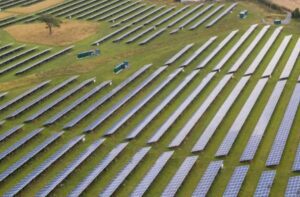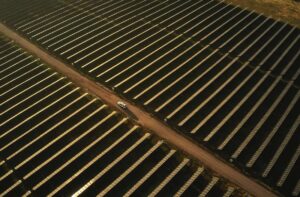A lot of the headlines around the solar photovoltaic industry are missing the point. They focus relentlessly on the price wars, the company collapses, the lawsuits, and the tit-for-tat trade. Few headlines focus on what is truly significant in the long term: that the cost of solar PV is continuing to fall dramatically. This is what matters most, everything else is peripheral.
Take, for instance, the announcement by Suntech, the world’s biggest solar PV manufacturer last week. Suntech appears to be in all sorts of corporate bother, caused by loans gone bad, management changes, and intense pricing competition. But one of the key points it made in its announcement went virtually unnoticed: it’s cost of manufacture, amid all the market gyrations, will fall 30 per cent in calendar 2012 – to 55c a watt (not including silicon). That is after a 75 per cent fall in the previous two years.
The significance of this is that amid the intense competition, companies are finding ways to innovate, cut PV costs, improve efficiencies and invest in technological development. Their survival depends on it.
And Suntech is by no means unique. As Deutsche Bank analyst Vishal Shah wrote in a report last week, the cost of utility-scale solar is coming down so quickly that developers are in a position to sign power purchase agreements of less than 10c/kWh. This was not expected to occur until closer to the end of the decade.
The economics of rooftop solar are “becoming even more interesting,” he notes, although he adds that there are considerable headwinds against the deployment of rooftop solar, including regulation and protectionism. And this causes him to be very cautious about investment in solar stocks, particularly in the “upstream” market – the manufacturers.
“Although we agree solar is starting to become competitive with conventional power generation sources in several regions worldwide, it may be still too early to step in,” he said. The key reason is that while costs are falling, so too are prices, as this graph provided by Nigel Morris highlights.
Shah says it is possible that the margins will contract further and that pricing could decline below cash costs as companies start to liquidate inventory. This is clearly unsustainable, and means that the strength of company balance sheets will be crucial in deciding which companies are left standing.
Tim Buckley, from Australia’s ArkX Investment Management, says the decline in the PV cost curve is important, and argues that it is wrong to assume that once the price war is over that prices will automatically rise.
“We’re not going to see a price rebound,” Buckley tells RenewEconomy. “Margins have been crunched to zero, but Suntech shows that dramatic cost reductions are still coming through system – whether it is the manufacturing system, or installation cost, or even on silicon. That still leaves double-digit price deflation as base case for the next 2 to 3 years.”
Shah says markets such as Japan, India, China, the Middle East, Africa, Brazil and the US have the best prospects. Curiously, no mention of Australia. His estimate of fully installed solar system prices at utility scale is now $1.50/W. This is about one-third cheaper than the best estimates in Australia – mostly because of the balance-of-system costs. As we have noted here and here, banks are only just coming on board.
In other news:
Canadian Solar has signed a deal with Australian distribution company Redset to supply more than 20MW a year of high performance modules for commercial and residential installations.
In Japan, the solar deployment continues apace, with Spanish developer Gestamp Solar announcing plans to invest around 90 billion yen ($1.16 billion) in solar panels and plants in Japan over the next three years. The company has signed an agreement with Japan’s Kankyo Keiei Senryaku Soken to develop around 300 MW of rooftop solar power installations and ground-mounted projects within three years. Around two-thirds of this will come from rooftop installations.
This announcement comes as the Japanese Ministry of Economy, Trade and Industry (METI) announced it has approved a higher than expected 725 MW of non-residential solar PV systems in the two months ending in August – the first months that new 42 yen ($0.525) per kilowatt-hour (kWh) feed in tariff came into effect. The government had forecast around 500 MW of non-residential solar PV for the entire fiscal year. According to local newspaper reports, METI also approved 306 MW of residential solar PV systems in the same period.
Egypt has announced plans to hold a reverse auction for a 50MW solar plant in 2013, as Saudi Arabia also prepares for its first auctions to kick-start its planned $100 billion investment in 42GW of solar over the next two decades. Acciona, which has won tenders for a 160MW solar thermal plant in Morocco and a 50MW plant in South Africa, said it plans to bid in both tenders.
In India, Reliance Energy, one of the country’s biggest coal-fired generators, has raised $300 million from a consortium of banks to help fund a planned $402 million, 100MW solar thermal plant in India.
Meanwhile, the United States has unveiled a blueprint to have 23.7GW of large-scale solar projects across six western states. The document, unveiled by Interior Department Secretary Ken Salazar, identifies solar energy development zones in Arizona, California, Colorado, Nevada, New Mexico, and Utah with access to existing or planned transmission capacity, and where utility-scale solar PV installations would pose minimal risks to wildlife and ecosystems. It also establishes incentives for project development. So far, the Obama administration has agreed to 10GW of renewable energy on public lands, with the recent approval of the Chokecherry and Sierra Madre wind projects in Wyoming.








